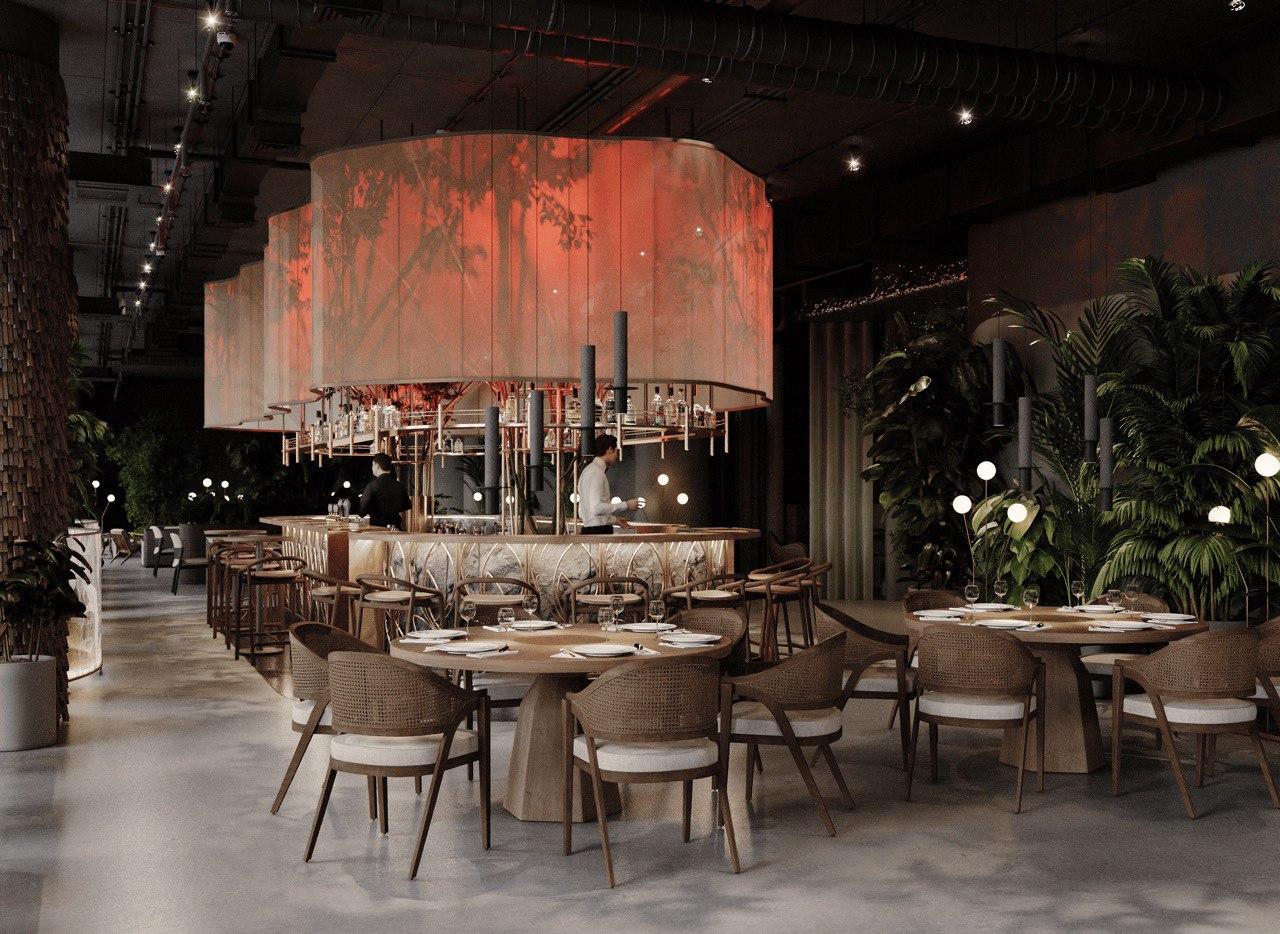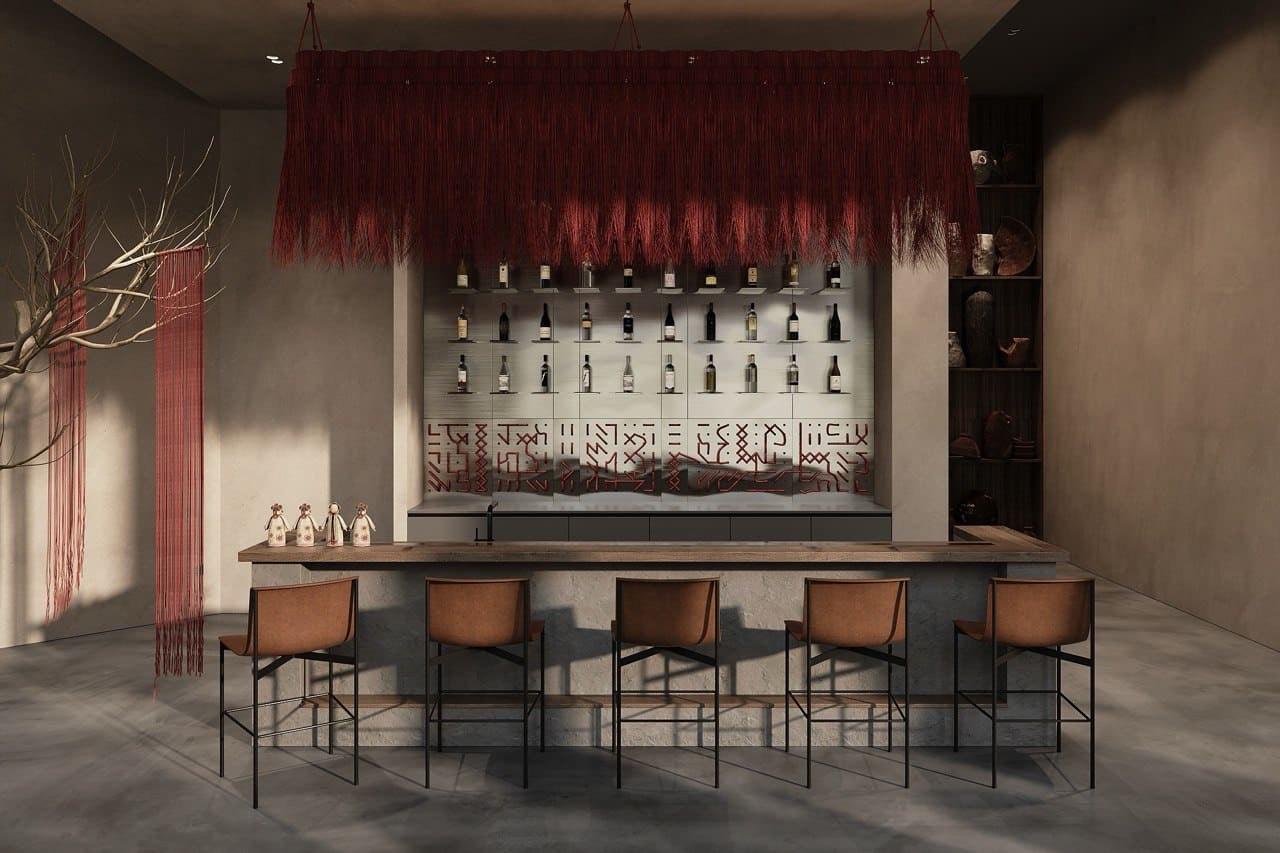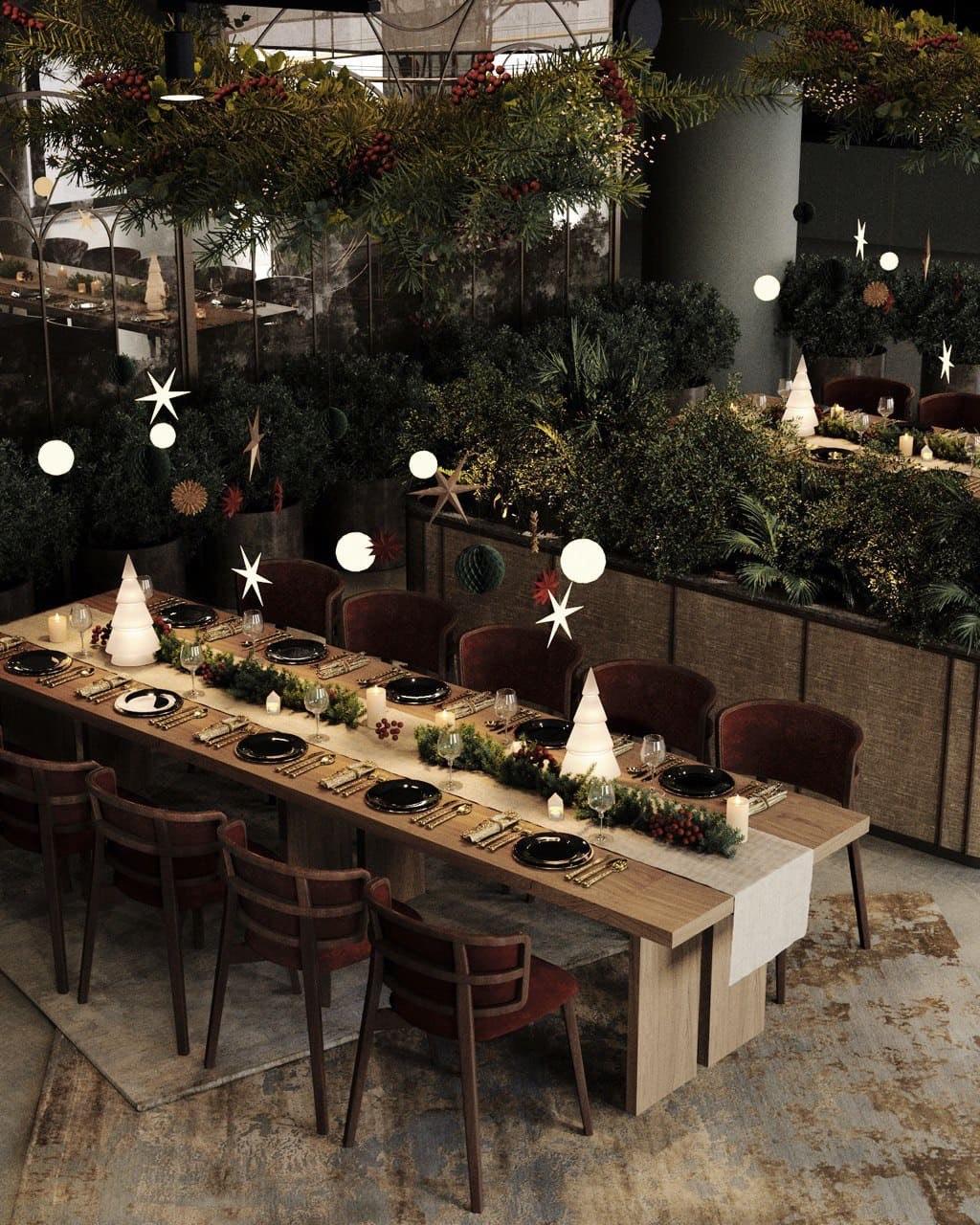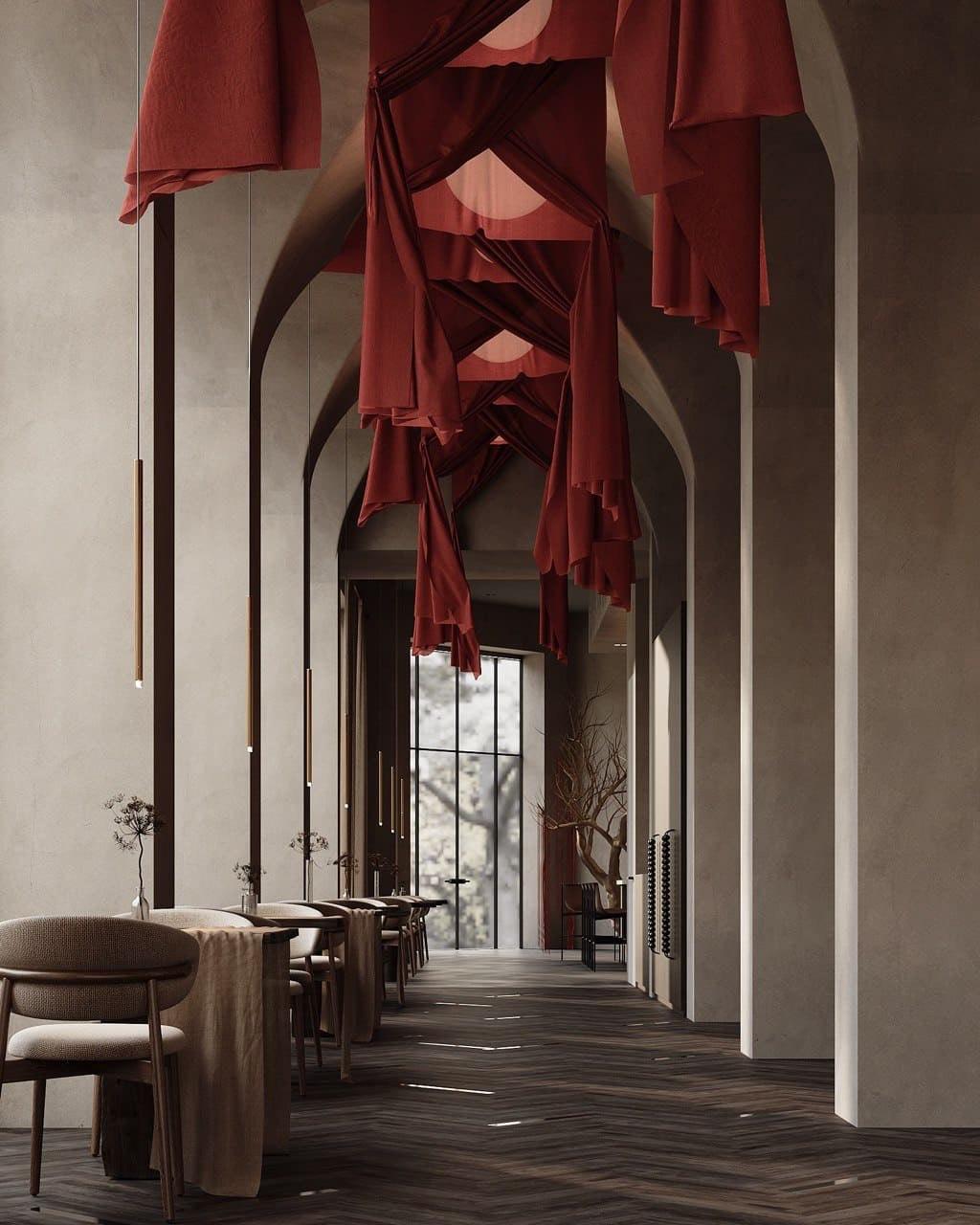In a world where first impressions are everything, the interior design of commercial spaces goes far beyond aesthetics.
It is a powerful communication tool that tells the story of your brand, emotionally engages with customers, and creates a unique experience. A well-designed space inspires, attracts, and holds the attention of visitors, stimulating their desire to return again and again.
Restaurant Interior. Design by ZIKZAK Architects
Flexibility as a Principle of Modern Design
Modern design of commercial spaces must be flexible and adaptive. Our key principle is that commercial spaces cannot be static.
The dynamics and ability to transform the space are what allow a business to stay relevant at any time. The basic design should allow for easy changes in the atmosphere of the space using just three tools: lighting, textiles, and décor. These elements make it possible to quickly transform the space to meet specific needs without significant financial investment, while maintaining its unique style.

Restaurant Interior. Design by ZIKZAK Architects
Example: Christmas Transformation of the Restaurant
We designed the restaurant with a neutral base and carefully planned accent areas. The basic architecture of the space allows owners to experiment with seasonal transformations without disrupting its fundamental DNA.
For transformation possibilities, we incorporated:
- A hidden modular lighting system
- Universal attachment points for decorative elements
- A minimalist layout with soft lines
During the Christmas season, the restaurant transforms. The same space that appears restrained and elegant during the day shines with a cozy, festive atmosphere in the evening. By using themed décor, textiles, and lighting, an entirely new mood is created without complex or costly renovations. The establishment attracts new customers, while regular visitors are pleasantly surprised by the changes and inspired to return for more visits.
Each element must be a logical continuation of the basic concept. In just a few hours, a business space can turn into a festive residence. Soft garlands delicately highlight architectural lines. Textile covers on the chairs add coziness. Pointed decorative elements create a festive ambiance. No massive constructions or loud decorations, just subtle design techniques.

Restaurant Interior. Design by ZIKZAK Architects
Why is the transformability of space important for business?
Capturing Customer Attention
A constantly updated yet recognizable space sparks interest and encourages customers to return. Clients love new experiences, and design can be one of the key tools to satisfy this need.
Adaptability to Change
Seasonal holidays, marketing campaigns, or special events— the ability to quickly change the space without significant capital investment makes a business competitive and adaptive.
Emotional Marketing
Each transformation creates a new story and a new reason for communication with customers. Holiday decorations, changes in décor, or new situational accents generate unforgettable emotions that attract customers and increase their loyalty to the brand.
Design becomes a strategic tool that enhances brand recognition: the space becomes part of your story, setting you apart from your competitors.
Increasing Customer Loyalty: Atmospheric and ever-changing spaces form positive impressions and encourage repeat visits.
Additional Micro-Communications: Each transformation is a new opportunity to interact with customers through social media, events, and themed campaigns.

Restaurant Interior. Design by ZIKZAK Architects
Interior design helps businesses attract new customers, retain existing ones, and develop their brand. A flexible approach to design allows for creating spaces that do not limit but inspire. And most importantly, it makes your business recognizable, dynamic, and successful.
Read also:

